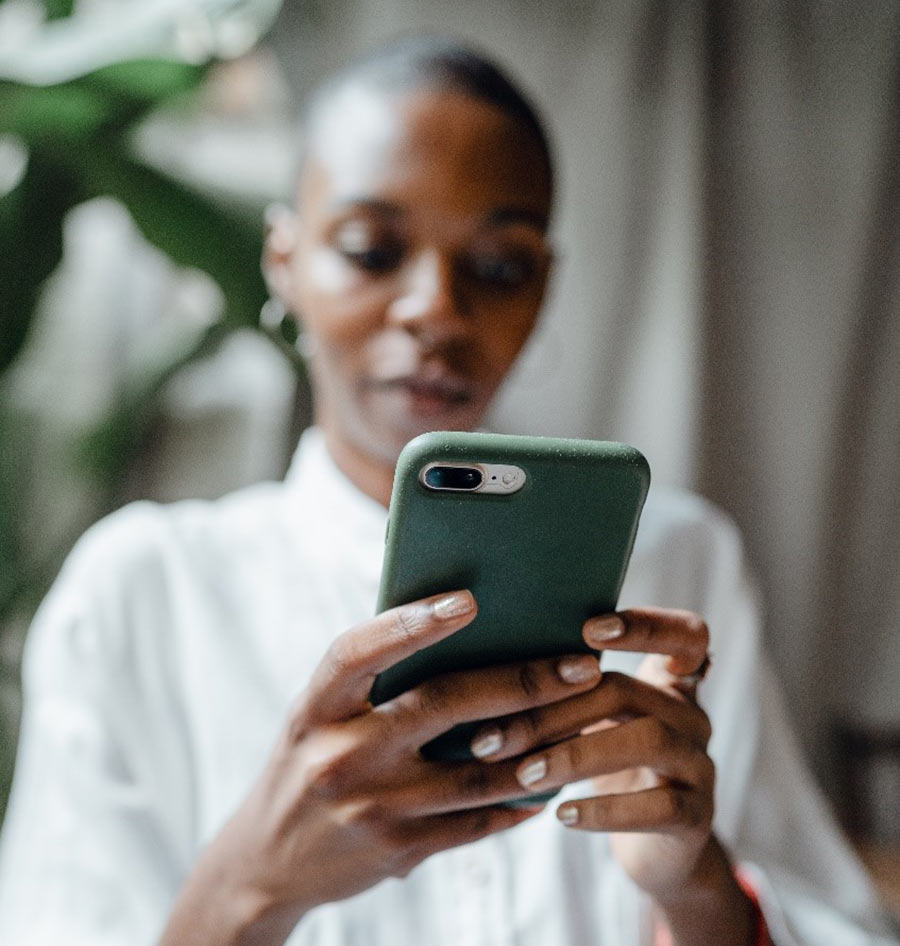The word “addiction” is often used to describe any impulsive behavior that is excessive, causes significant discomfort, and affects a person’s daily life. Addiction usually refers to very harmful practices, such as substance use, or gambling addiction.
The DSM-5 (Diagnostic and Statistical Manual of Mental Disorders, in its latest version) only includes gambling addiction, so the potential addictive use of mobile phones would not be listed as pathological. This is normal since the addiction to the mobile is something relatively recent, with the normalization and cheapening of these.
Although excessive mobile phone use is not officially recognized as an addiction yet (it may appear in the next edition of the DSM), it often affects a person’s life and causes negative feelings (such as anxiety or shame).
Many professionals would consider this dysfunctional behavior and offer treatment to alleviate the negative effects that phone use may be having on a person’s daily life and distress levels. It is important to note that there are several treatments and coping methods that can help.
Causes of mobile addiction
The causes can be various and originate from some type of particular event: for example, after a traumatic event, it is possible that many people resort to more use of their mobile phones to distract themselves and not face the real world.
However, in most cases there is no specific cause, but rather an “addiction” to dopamine. Dopamine regulates the reward system of our brain, and mobile phones function as a constant source of reward: notifications, funny videos, “likes” on social networks… This creates a need to resort to that “easy dopamine”, because it makes us feel good immediately. With this, a vicious circle is generated by which we increasingly need more dopamine.
Symptoms of mobile addiction
Yin et al. (2016) proposed a non-exhaustive set of diagnostic criteria for smartphone addiction, which has some overlap with criteria for general behavioral addictions. One could speak of a mobile phone addiction if there is a harmful pattern of use that leads to significant distress and that involves three or more of the following symptoms during the previous 3 months:
• Recurring inability to resist the urge to use the phone
• Anxiety or irritability after a period without using the mobile (similar to withdrawal syndrome).
• Persistent desire or unsuccessful attempts to quit or reduce smartphone use
• Spend excessive time using the smartphone despite the physical or mental problems resulting from it.
Consequences
Mobile addiction can generate various consequences in the lives of people who suffer from it. Thus, various studies have shown that there is a relationship between the excessive use of smartphones and different mental disorders.
Excessive use of smartphones has been found to be associated with disorders such as depression, anxiety, and attention deficit hyperactivity disorder (ADHD). Of course, this does not imply causation, since such excessive use does not necessarily have to be associated with a disorder as such.
In addition, it can cause physical changes, such as insomnia, migraines and even changes in the volume of brain gray matter, essential for different cognitive processes.
In adolescents and young people, there are additional risks; in these groups, smartphone use can cause problems with emotional regulation and cognitive function, impulsivity, and low self-esteem.
Finally, it can have an impact on different areas of people’s lives, such as the social or work level: the use of the mobile phone can mean a loss of attention and time that does not allow us to focus on other tasks.
How to disengage
There are different techniques to reduce the use of mobile phones effectively. Of course, in more extreme cases it is always recommended to have the help of a therapist.
• Identify when you use your mobile phone: it could be out of boredom, a desire for social connection, discomfort in certain social situations, anxiety… Once these moments have been identified, try to find concrete alternatives.
• Help yourself with mobile apps that limit the time of use: there are various apps that “prohibit” using the mobile at certain times or during certain minutes a day. There are even some in which, if you want to break the norm, you must pay for money.
• Make the use of the mobile phone less attractive: for example, putting the background or the text in more uncomfortable colors (grey, black…); too big text size…
• Try to do activities outside the home where you don’t take your phone with you. If you need to be connected, you can buy an old phone, which only has the calling function.
• Put the mobile in another room when you go to sleep; that way, it won’t be the first thing you look at when you wake up.
• Have more entertainment alternatives, so that the phone is not your first or main option.
If you feel that you spend more time than you should with your phone or you find it difficult to control and manage its use. We recommend that you consult with a mental health professional so that they can evaluate and advise your case, to learn how to better manage these difficulties.
References:
De-Sola Gutiérrez, J., Rodríguez de Fonseca, F., & Rubio, G. (2016). Cell-phone addiction: A review. Frontiers in psychiatry, 7, 175.
Lin, Y. H., Chiang, C. L., Lin, P. H., Chang, L. R., Ko, C. H., Lee, Y. H., & Lin, S. H. (2016). Proposed diagnostic criteria for smartphone addiction. PloS one, 11(11), e0163010.
Morrison, J. (2015). DSM-5® Guía para el diagnóstico clínico. Editorial El Manual Moderno.
Park, W. K. (2005). Mobile phone addiction. In Mobile communications: Re-negotiation of the social sphere (pp. 253-272). London: Springer London.
Xavi Ponseti
Col. Nº B-03138


